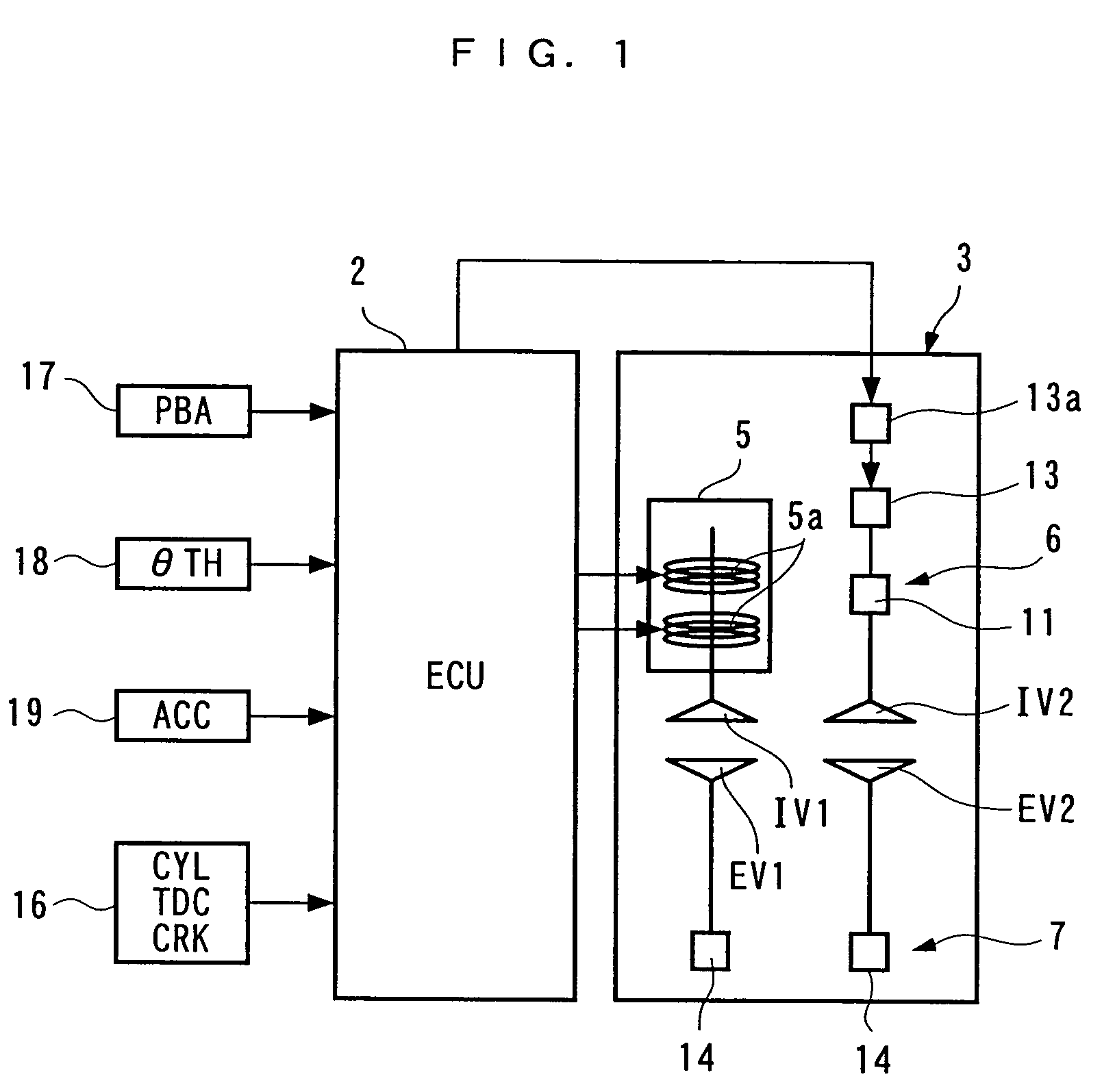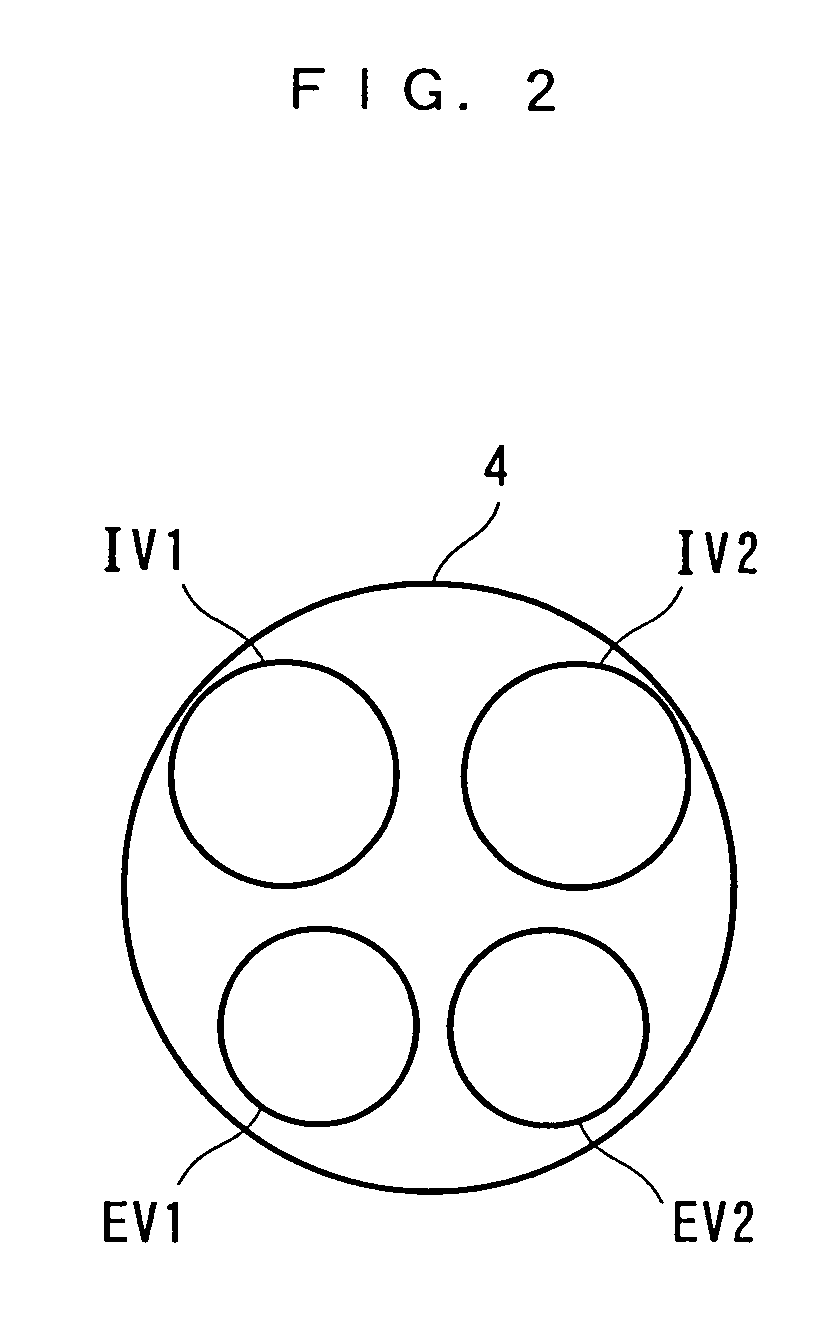Valve operation controller
a valve operation and controller technology, applied in electrical control, non-mechanical valves, machines/engines, etc., can solve the problems of inability to provide optimal valve opening timing, failure of valve operation controller to provide optimal opening/closing timing and lift amount, and inability to realize optimal valve opening/closing timing and other problems, to achieve the effect of eliminating a possible degradation of exhaust gas characteristic and reducing cost and weigh
- Summary
- Abstract
- Description
- Claims
- Application Information
AI Technical Summary
Benefits of technology
Problems solved by technology
Method used
Image
Examples
Embodiment Construction
[0032]In the following, a valve operation controller, a valve operation control method and an engine control unit for an internal combustion engine according to a first embodiment of the present invention will be described with reference to the accompanying drawings. FIG. 1 generally illustrates the valve operation controller according to the first embodiment. An illustrated internal combustion engine (hereinafter simply called the “engine”) 3 is a straight four-cylinder (two cylinders are illustrated in FIG. 3) SOHC type gasoline engine equipped in a vehicle, not shown. As shown in FIG. 2, each cylinder 4 is provided with a first and a second intake valve IV1, IV2, and a first and a second exhaust valve EV1, EV2. In this embodiment, the first intake valve IV1 is driven by an electromagnetic valve operating mechanism 5 to open and close; the second intake valve IV2 by a cam type valve operating mechanism 6; and both exhaust valves EV1, EV2 by a cam type exhaust valve operating mecha...
PUM
 Login to View More
Login to View More Abstract
Description
Claims
Application Information
 Login to View More
Login to View More - R&D
- Intellectual Property
- Life Sciences
- Materials
- Tech Scout
- Unparalleled Data Quality
- Higher Quality Content
- 60% Fewer Hallucinations
Browse by: Latest US Patents, China's latest patents, Technical Efficacy Thesaurus, Application Domain, Technology Topic, Popular Technical Reports.
© 2025 PatSnap. All rights reserved.Legal|Privacy policy|Modern Slavery Act Transparency Statement|Sitemap|About US| Contact US: help@patsnap.com



